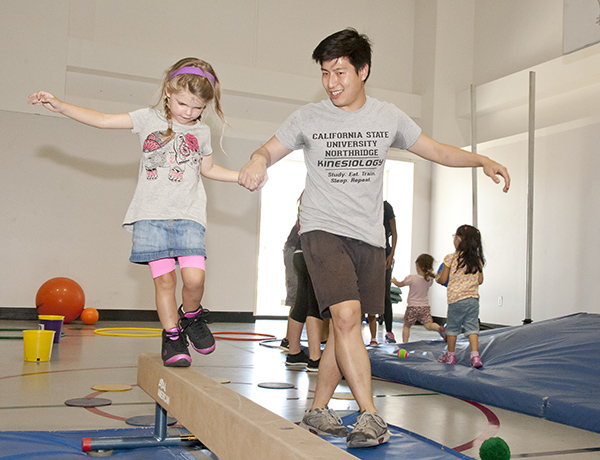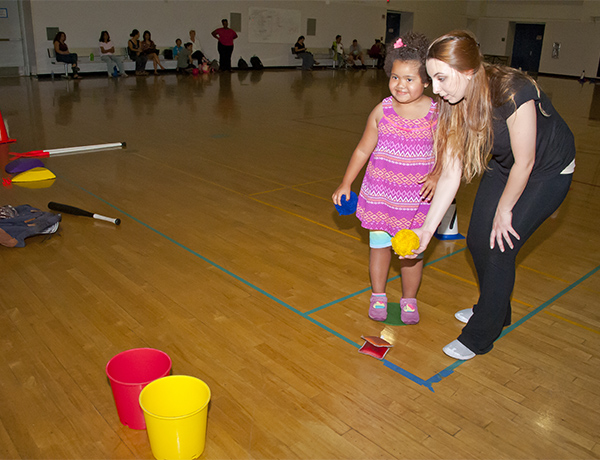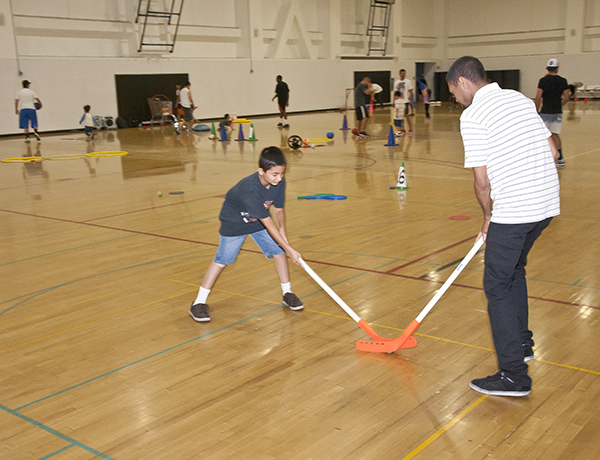CSUN Sensory Motor Program Elevates Children’s Lives
However, as the Department of Kinesiology’s five-week-long sensory motor summer program neared its end, Draven reached milestones her mother never expected.
“It’s been incredible for me to see her go from barely being able to walk along a street curb to walking on a balance beam,” said Annie Mayo, Draven’s mother. “Her endurance in sitting longer in upright positions is so much better, and she loves this program.”
The three-year-old Sensory Motor Program is offered for five weeks in the summer and 10 weeks during the academic year to children ages 2 to 12. The program, which is free to the community, works on developing the children’s motor skills through physical activities, including jumping, running and handling a ball. The class is a mix of children with typical skills and those with special needs, including autism and Down syndrome and attention-deficit hyperactivity disorder.
CSUN’s program is one of just a few of its kind open to typical children and those with disabilities. Children with special needs play alongside children with typical development.
“Motor development is important for all children, those with or without disabilities,” said kinesiology professor Teri Todd, director of the program. “This is a wonderful opportunity to bring children together who have different skill levels and abilities in a positive, supportive environment. As the parent of three children, one with autism, I realized that it was rare that all three could be active at the same time.
“Too often, my daughters waited while my son had therapy — and my son waited while my daughters participated in an activity. Having an inclusive program means no one is left waiting.”
During the summer, twice a week for 50 minutes, the participants receive one-on-one instruction from CSUN undergraduate students enrolled in a kinesiology motor behavior principles class. Students with more severe disabilities work with kinesiology adapted physical activity graduate students who volunteer their time.
One of the first things the CSUN students do is assess the children’s skill level in the areas of locomotion, object control and body awareness, and rhythm and dance. Instead of having the children simply run, jump or throw a ball, the CSUN students try to make the exercises fun by incorporating them in activities and games like soccer and basketball.
Last semester, the department added a fitness class — taught concurrently with the program — for the parents of the children in the program.
“This is another important component to support parents who often don’t get a break,” Todd said. “Exercise is important in dealing with stress and a number of health issues. We try to support the whole family.”
Karen Murata, whose 6-year-old daughter, Jasmine, has autism and mild right cerebral palsy, said her daughter has learned how to catch a ball since starting the program.
“We had been trying to teach her how to catch for years, but she came here and something clicked,” Murata said.
“Until we found CSUN, it was really difficult to find programs that were affordable and that had people who would treat her with kindness and respect,” she added. “She gets so happy when she knows we’re coming here.”




 experience
experience